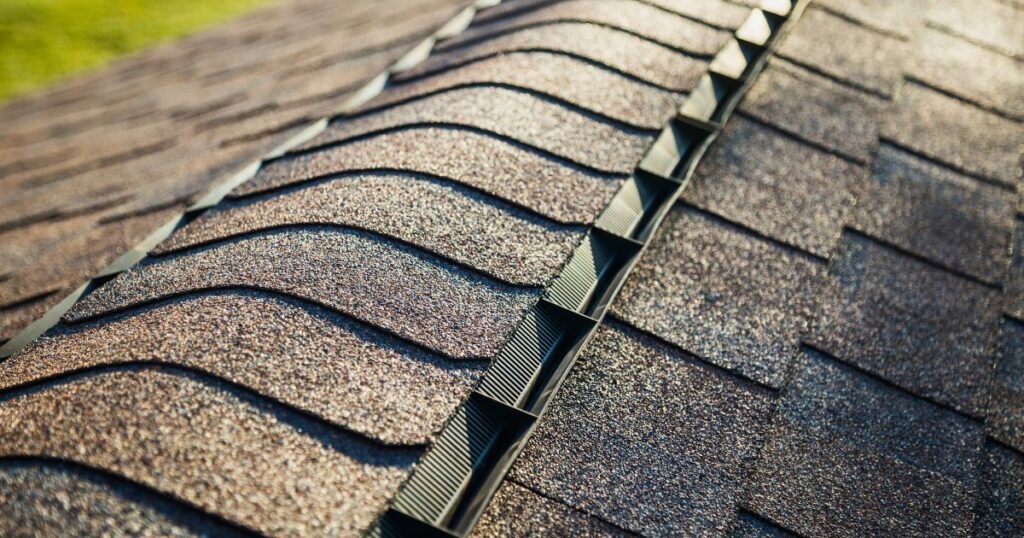
Roof Cap Shingles: The Ultimate Guide to Protection and Aesthetics
Roof cap shingles are a critical component of any roofing system, providing a protective barrier against the elements while also enhancing the aesthetic appeal of your home. Understanding the purpose, types, installation, and maintenance of roof cap shingles is essential for ensuring the longevity and performance of your roof. This comprehensive guide will delve into all aspects of roof cap shingles, offering valuable insights for homeowners, contractors, and anyone interested in roofing solutions.
What are Roof Cap Shingles?
Roof cap shingles, also known simply as ridge caps, are specifically designed shingles used to cover the ridge and hips of a roof. These areas are particularly vulnerable to water infiltration and wind damage because they represent the meeting points of different roof planes. Unlike standard roofing shingles, roof cap shingles are often thicker and more durable to withstand the additional exposure to the elements.
The primary function of roof cap shingles is to seal the roof’s ridge and hips, preventing water from seeping into the underlayment and eventually causing leaks inside the building. They also provide a neat, finished look to the roof, contributing to its overall aesthetic appeal. A properly installed roof cap shingle system is crucial for maintaining the structural integrity of the entire roofing system.
Types of Roof Cap Shingles
There are several types of roof cap shingles available, each with its own unique characteristics and benefits. The choice of which type to use often depends on the style of the roof, the climate, and the desired aesthetic.
Asphalt Roof Cap Shingles
Asphalt roof cap shingles are the most common and cost-effective option. They are made from the same material as standard asphalt shingles, making them a seamless match for the rest of the roof. Asphalt roof cap shingles come in a variety of colors and styles to complement different architectural designs. They are relatively easy to install and provide excellent protection against the elements. However, they may not be as durable as some of the other options available.
Laminate Roof Cap Shingles
Laminate roof cap shingles, also known as dimensional or architectural shingles, offer a more premium look and enhanced durability. They are made from multiple layers of asphalt, creating a thicker and more textured appearance. Laminate roof cap shingles are more resistant to wind and impact damage compared to standard asphalt shingles. While they are more expensive, they can significantly enhance the curb appeal of a home and provide longer-lasting protection.
Metal Roof Cap Shingles
Metal roof cap shingles are a durable and long-lasting option for roofs made of metal. They are typically made from the same type of metal as the rest of the roof, such as steel, aluminum, or copper. Metal roof cap shingles are highly resistant to fire, wind, and impact damage. They also offer excellent energy efficiency by reflecting sunlight and reducing heat absorption. While metal roof cap shingles are more expensive than asphalt options, they can provide decades of reliable performance with minimal maintenance.
Tile Roof Cap Shingles
Tile roof cap shingles are specifically designed for tile roofs, providing a seamless and aesthetically pleasing finish. They are made from clay or concrete and come in a variety of shapes, sizes, and colors to match the existing tiles. Tile roof cap shingles are highly durable and resistant to fire and pests. They also offer excellent insulation properties, helping to keep the home cool in the summer and warm in the winter. However, they can be more challenging to install and may require specialized tools and expertise.
Installation of Roof Cap Shingles
Proper installation of roof cap shingles is crucial for ensuring their effectiveness and longevity. While some experienced DIYers may be able to handle the installation, it is generally recommended to hire a professional roofing contractor to ensure the job is done correctly. Here are the general steps involved in installing roof cap shingles:
- Preparation: Before installing the roof cap shingles, ensure that the roof surface is clean and dry. Remove any debris, such as leaves, branches, or old nails. Inspect the underlayment for any damage and repair as needed.
- Cutting the Shingles: Depending on the type of roof cap shingles and the angle of the roof, you may need to cut the shingles to the appropriate size and shape. Use a utility knife or a shingle cutter to make clean, precise cuts.
- Applying Adhesive: Apply a bead of roofing cement or adhesive to the underside of the roof cap shingles. This will help to secure the shingles in place and prevent them from being lifted by the wind.
- Fastening the Shingles: Position the roof cap shingles along the ridge or hip of the roof, overlapping each shingle by the recommended amount. Use roofing nails to fasten the shingles to the roof deck. Ensure that the nails are driven straight and flush with the surface of the shingles.
- Sealing the Edges: Once the roof cap shingles are installed, seal the edges with roofing cement or caulk to prevent water from seeping underneath. This is especially important in areas that are prone to heavy rain or snow.
Maintenance and Repair of Roof Cap Shingles
Regular maintenance and timely repairs are essential for extending the life of your roof cap shingles. Inspect your roof at least twice a year, preferably in the spring and fall, to identify any potential issues. Here are some common maintenance tasks and repair tips:
- Cleaning: Remove any debris, such as leaves, branches, or moss, from the surface of the roof cap shingles. Use a soft brush or a garden hose with a gentle spray nozzle to avoid damaging the shingles.
- Inspecting for Damage: Look for signs of damage, such as cracks, blisters, or missing granules. Repair any damaged shingles promptly to prevent further deterioration.
- Replacing Damaged Shingles: If a roof cap shingle is severely damaged or missing, it will need to be replaced. Carefully remove the damaged shingle and install a new one, following the same steps as the initial installation.
- Sealing Leaks: If you notice any leaks in your roof, inspect the roof cap shingles for potential sources. Seal any cracks or gaps with roofing cement or caulk.
Choosing the Right Roof Cap Shingles
Selecting the right roof cap shingles for your home involves considering several factors, including the type of roof, the climate, the budget, and the desired aesthetic. Here are some tips to help you make the right choice:
- Match the Style: Choose roof cap shingles that match the style and color of your existing roofing shingles. This will ensure a seamless and aesthetically pleasing look.
- Consider the Climate: If you live in an area with harsh weather conditions, such as strong winds or heavy snow, choose roof cap shingles that are designed to withstand those conditions.
- Set a Budget: Roof cap shingles vary in price, so set a budget before you start shopping. Consider the long-term cost of ownership, including maintenance and replacement, when making your decision.
- Read Reviews: Read reviews from other homeowners and contractors to get an idea of the quality and performance of different roof cap shingle products.
- Consult with a Professional: If you are unsure which type of roof cap shingles to choose, consult with a professional roofing contractor. They can assess your needs and recommend the best option for your home.
The Importance of Proper Ventilation with Roof Cap Shingles
While roof cap shingles primarily provide a watertight seal at the ridges and hips, they also play a role in roof ventilation when combined with proper venting systems. Adequate ventilation is crucial for preventing moisture buildup in the attic, which can lead to mold growth, wood rot, and reduced insulation effectiveness. A well-ventilated roof helps regulate temperature, extending the lifespan of the roofing materials and improving energy efficiency. Many modern roof cap shingle designs incorporate ventilation features, such as ridge vents, that work in conjunction with soffit vents to create a continuous airflow. [See also: Attic Ventilation Best Practices] Choosing the right type of roof cap shingle that complements your existing ventilation system is vital for maintaining a healthy and efficient roof.
Cost Considerations for Roof Cap Shingles
The cost of roof cap shingles can vary depending on the material, brand, and installation complexity. Asphalt roof cap shingles are generally the most affordable option, while metal and tile roof cap shingles tend to be more expensive. Installation costs can also vary depending on the complexity of the roof and the labor rates in your area. It’s essential to obtain multiple quotes from reputable roofing contractors to compare prices and ensure you’re getting a fair deal. While it may be tempting to opt for the cheapest option, investing in high-quality roof cap shingles and professional installation can save you money in the long run by reducing the need for frequent repairs and replacements. [See also: Roofing Cost Estimator] Consider factors such as warranty coverage and expected lifespan when evaluating the overall value of different roof cap shingle options.
Conclusion
Roof cap shingles are an essential component of a well-maintained and aesthetically pleasing roof. By understanding the different types of roof cap shingles, proper installation techniques, and maintenance practices, you can ensure that your roof provides reliable protection and enhances the value of your home for years to come. Whether you are building a new home or replacing an existing roof, investing in high-quality roof cap shingles is a smart decision that will pay off in the long run.

